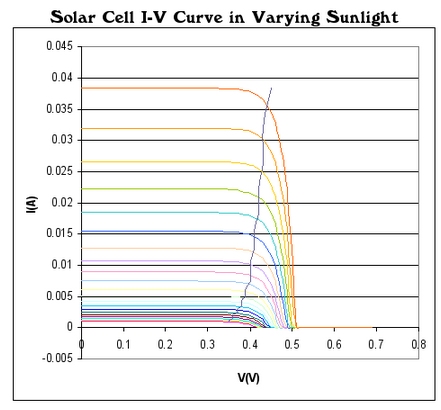6.7. DC/DC Conversion
A typical output voltage of PV panels can be on the order of 30 V, and it is too low for being converted to AC and fed to the grid. Therefore, DC/DC conversion is often a necessary step before the DC current from the PV system is supplied to the inverter. Most of the power conditioning units include some type of DC/DC converter. Direct current converter transforms the DC voltage V1 to DC voltage V2 via adjusting the current (I):
This is an ideal case, when input power is equal to the output power. In reality, there are always conversion losses, which lead to typical efficiencies in the range 90-95%.
DC/DC conversion allows keeping the voltage on the PV and voltage on the load separately controlled. There are two main types of DC/DC converters depending on the direction of voltage change: (1) boost converters transform smaller voltage to higher voltage and (2) buck converters transform higher voltage to lower voltage.
Please proceed to the following reading to learn more details about the operating principles of the DC/DC converters.
Reading Assignment
Book chapter: Mertens, K and Hanser K.F., Photovoltaics: Fundamentals, Technology and Practice, Chapter 7, Section 7.1.2 DC/DC Converter, pp. 161-168. (See E-Reserves via the Library Resources tab.)
MPP tracking
One of the important functions that DC/DC converting devices can perform is maximum power point (MPP) tracking. The idea behind it is to keep the solar power system operating constantly at the maximum power, i.e., at the voltage Vmp and current I mp. These parameters were discussed in Lesson 4, and Figure 4.4 illustrates the concept.
Assume that at a certain ambient irradiance, a solar cell or an array operate at the maximum power. Then, if the irradiance conditions change, the performance characteristic (I-V curve) of the cell changes (Figure 11.6). Thus, if the output voltage is kept constant, the output current drops significantly. The MMP tracker is used to adjust the voltage to the new Vmp value, thus maintaining the maximum power output.

I-V performance curves of a solar cell in varying sunlight. The upper curves demonstrate the cell performance at higher irradiance conditions. The vertical path crossing the performance curves indicates the shift of the maximum power point.
In large solar facilities, it is beneficial to have an individual MPP tracking unit to be connected to each array output, since different arrays may have different I-V characteristics (due to varying irradiance, orientation etc.). This improves the overall performance of the plant.
An algorithm for MPP tracking is discussed in Section 7.1.3 of the above-referenced reading.
Please answer the following self-check questions before proceeding to the next section.
Check your understanding
Question 4. The principle of the buck DC/DC converter is based on periodically switching on and switching off the signal and then smoothing the output. Which parameter is used to regulate the switch-on/switch-off regime?
Question 5. Can you calculate the output of the boost DC/DC converter that uses the duty factor of 0.6 to convert 10 V of DC?
